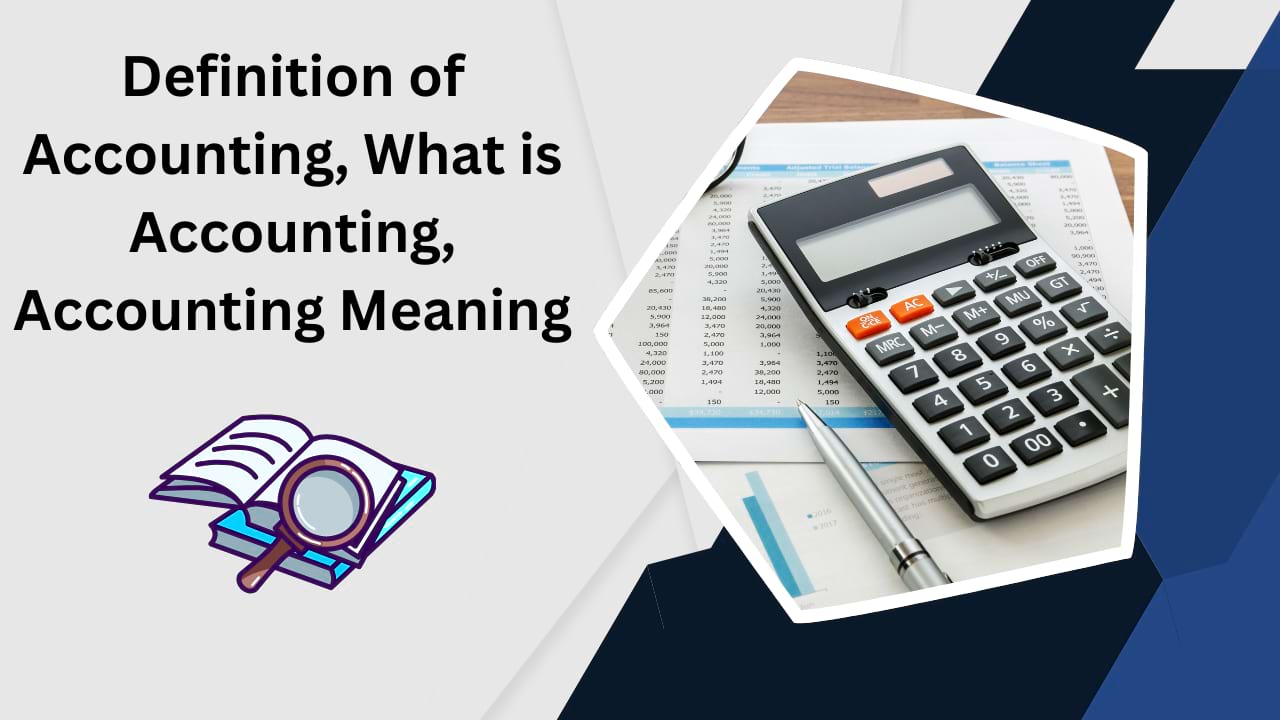Definition of Accounting: Accounting is used by business entities to keep records of their monetary or financial transactions. A businessman who has invested money in his business would like to know whether his business is making a profit or incurring a loss, the position of his assets and liabilities, and whether his capital in the business has increased or decreased during a particular period.
Definition of Accounting
The definition given by the American Institute of Certified Public Accountants (‘AICPA’) brings out the meaning of accounting. According to it, accounting is “the art of recording, classifying and summarizing in a significant manner and in terms of money, transactions, and events which are, in part at least, of a financial character and interpreting the results thereof”. The definition brings out the following as attributes of accounting :
The Committee on Terminology set up by the American Institute of Certifed Public Accountants formulated the following definition of accounting in 1961:
“Accounting is the art of recording, classifying, and summarising in a significant manner and in terms of money, transactions, and events which are, in part at least, of a financial character, and interpreting the result thereof.”
Definition by the American Accounting Association (The year 1966):
The process of identifying, measuring, and communicating economic information to permit informed judgments and decisions by the users of accounting. Must Check Limitations of Accounting.
Meaning of Accounting
(i) Accounting is an art. Accounting is classified as an art, as it helps us in attaining our aim of ascertaining the financial results, that is, operating profit and financial position through analysis and interpretation of financial data which requires special knowledge, experience and judgment.
(ii) It involves recording, classifying, and summarizing. Recording means systematically writing down the transactions and events in account books soon after their occurrence. Classifying is the process of grouping transactions or entries of the same type in one place. This is done by opening accounts in a book called ledger. Summarizing involves the preparation of reports and statements from the classified data (ledger), understandable and useful to management and other interested parties. This involves the preparation of final accounts namely profit and loss accounts and balance sheets. You may also like Accrued Liabilities.
(iii) It records transactions in terms of money. All transactions are recorded in terms of common measure i.e. money which increases the understanding of the state of affairs of the business.
(iv) It records only those transactions and events which are financial. If an event has no financial character then it will not be capable of being measured in terms of money; it will not be, therefore, recorded.
(v) It is the art of interpreting the results of operations to determine the financial position of the enterprise, the progress it has made and how well it is getting along.
As per this definition, accounting is simply an art of record keeping. The process of accounting starts by first identifying the events and transactions that are financial and then are recorded in the books of account. This recording is done in Journal or subsidiary books, also known as primary books. Every good record-keeping system includes a suitable classification of transactions and events as well as their summarisation for ready reference. After the transactions and events are recorded, they are transferred to secondary books i.e. Ledger. In the ledger, transactions and events are classified in terms of income, expense, assets and liabilities according to their characteristics and summarised in proft and loss account and balance sheet.
Essentially the transactions and events are to be measured in terms of money. Measurement in terms of money means measuring the ruling currency of a country, for example, the rupee in India, the dollar in the U.S.A., and like. The transactions and events must have at least in part, financial characteristics. The inauguration of a new branch of a bank is an event without having financial character, while the business disposed of by the branch is an event having financial character. Accounting also interprets the recorded, classified, and summarised transactions and events. Must Check List of Ind AS.
However, the above-mentioned definition does not reflect the present-day accounting function. The dimension of accounting is much broader than that described in the above definition. According to the above definition, accounting ends with the interpretation of the results of financial transactions and events but in the modern world with the diversification of management and ownership, globalization of business, and society gaining more interest in the functioning of enterprises, the importance of communicating the accounting results has increased and therefore, this requirement of communicating and motivating informed judgment has also become part of accounting as defined in the widely accepted definition of accounting, given by the American Accounting Association in 1966 which treated accounting as
“The process of identifying, measuring and communicating economic information to permit informed judgments and decisions by the users of accounts.”
In 1970, the Accounting Principles Board (APB) of the American Institute of Certifed Public Accountants (AICPA) enumerated the functions of accounting as follows:
“The function of accounting is to provide quantitative information, primarily of financial nature, about economic entities, that is needed to be useful in making economic decisions.”
Thus, accounting may be defned as the process of recording, classifying, summarising, analysing and interpreting the fnancial transactions and communicating the results thereof to the persons interested in such information.

